When one thinks of visiting Bali there is often a list of temples to see. This was certainly the case when I travelled there a few years ago…and they were definitely a highlight of this beautiful island.
Goa Gajah Temple. This temple has both Hindu relics and carvings that date back to the 10th century, as well as Buddhism features from the 8th century. Inside the cave you will find three stone idols wrapped in cloth with offerings and often incense burning, as well as a stone statue of the Hindu god Ganesh.

The word goa means cave and gajah means elephant. There were never any elephants at this site so the name may have come from a nearby river knows as the elephant river, or from the front of the cave, which may represent the head of an elephant.

The pool was discovered in 1954 and has statues depicting Hindu gods with vases that act as spouts for the water. This temple site is stunning with statues, small streams, pools, and a forest area you can walk through.

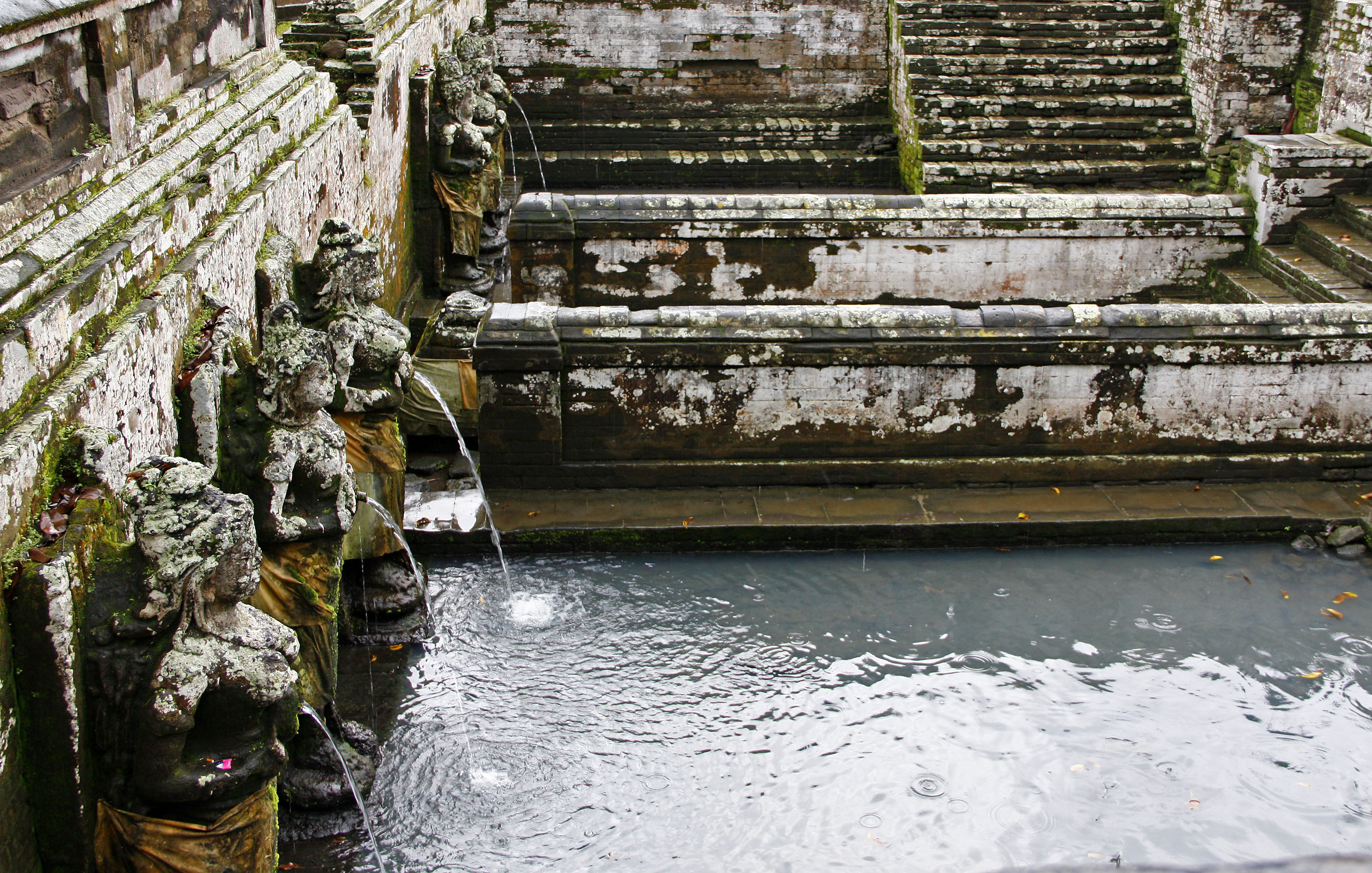
Candi Gunung Kawi Temple. This temple, built in the 11th century, is accessed by walking down a pathway and then descending 300 stairs between rice paddy fields to the temple area.

At the bottom there is a basin of water that you sprinkle yourself with for purification before entering the temple area. Once inside you will find 10 shrines (candis) carved into the stone walls located on two sides of the temple area. On one side the temple shrines are dedicated to a Balinese king, his queen and their three sons. On the other side the carvings are thought to be of additional family members.

Pura Tirta Empul, which means “holy water temple” in Balinese, is a temple dedicated to Vishnu, the Hindu god of water. These holy springs have been visited by worshippers since 926 A.D. If you venture into the inner courtyard you will find the main springs that feed the pool which people use to purify themselves with. This area of the temple is quiet and is used for prayer.

The larger pool area has 30 water spouts where worshippers form lines that snake from one spout to the next. People start on the left and then move to the right to the next line. The water that flows here is believed to have the power to cure illnesses.
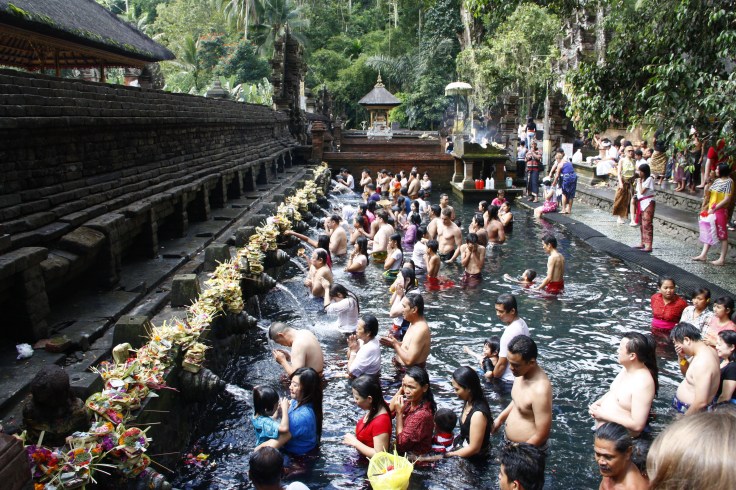
Pura Taman Saraswati. This water temple is easy to walk to if you are staying in Ubud. This temple was built in 1951-2 and is dedicated to the Hindu goddess Sarasvati, the divine being of knowledge, literature and the arts. This complex has a beautiful walkway that takes you over ponds with blossoming lotus flowers. There is also a café on this site where you can sit and enjoy the view.
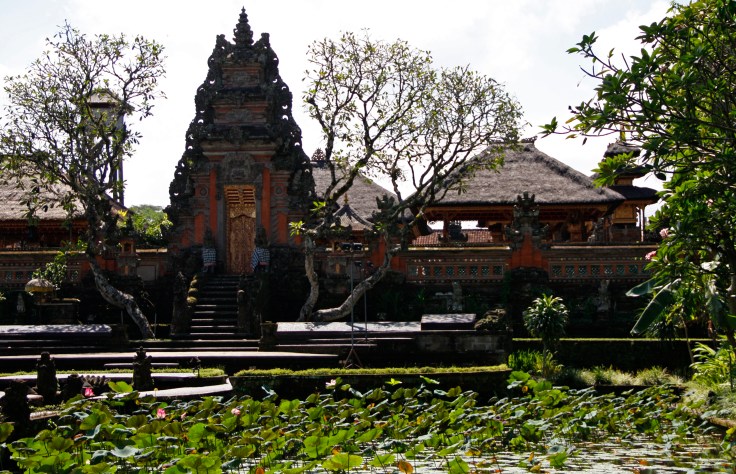
Three gates, which lead to the inner courtyard, can be found on the front of the main complex. However, these gates are usually closed to prevent visitors from entering. The carved wooden doors symbolize the importance of passing from the outer world to the sacred interior of the temple.

Pura Ulun Danu Beratan or Pura Bratan. Located in the Bedugul area in central Bali, this temple was built in the 17th century. It is an important temple for Hindus to worship Brahma, Vishnu, and Shiva, the three main gods; as well as Dewi Danu, the lake goddess. There is also a Buddhist stupa located on the main grounds, once again showing how these two religions have shared sacred sites for thousands of years.

The tiers on the three main temples represent the different gods…11 tiers for Vishnu, 7 tiers for Brahma, and 3 tiers for Shiva. This is a very popular complex and one of the most photographed temples. The location of this site causes it to be often cloudy or foggy. Be patient and the sun might make an appearance.
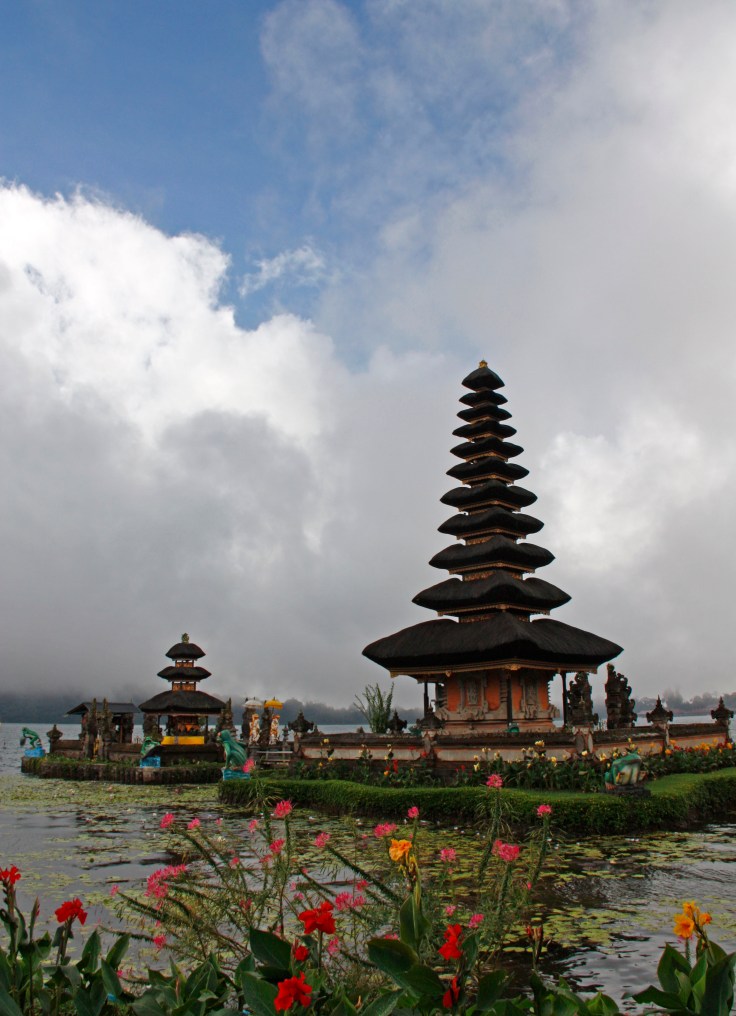
Brahmavihara-Arama Buddhist Monastery. This isn’t a temple, but it is so impressive that I have to include it here. Located in northern Bali, this monastery was built in 1969 and is a mini-replica of the Buddhist monastery at Borobudur on the island of Java. There are lovely gardens to wander through, as well as rooms to meditate in.

With its combination of peaceful surroundings, as well as its variety of Buddha statues, this monastery has become an important site for Buddhist monks and pilgrims.
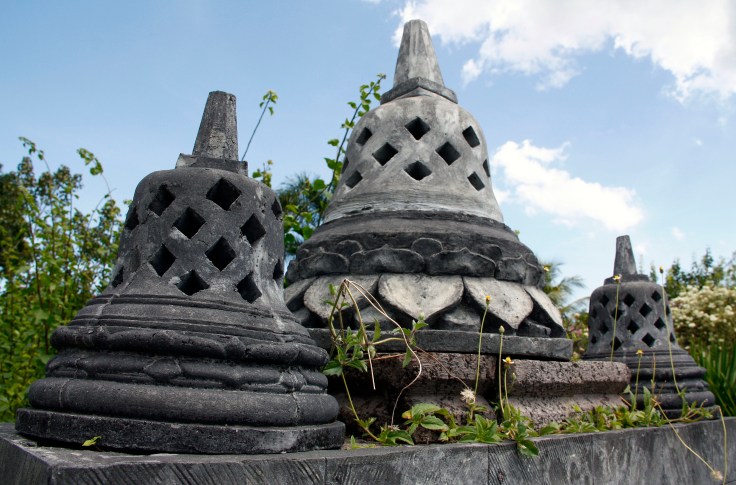
Uluwatu Temple can be reached easily from the Kuta area of Bali. The word ulu means “top” and watu means “rock” so you can imagine the placement for this temple! Some relics found at this site date back to the 10th century. Unfortunately, when we visited here the inside of the temple was closed off for a ceremony.

However, the striking location, perched on the cliff-top is worth the visit!
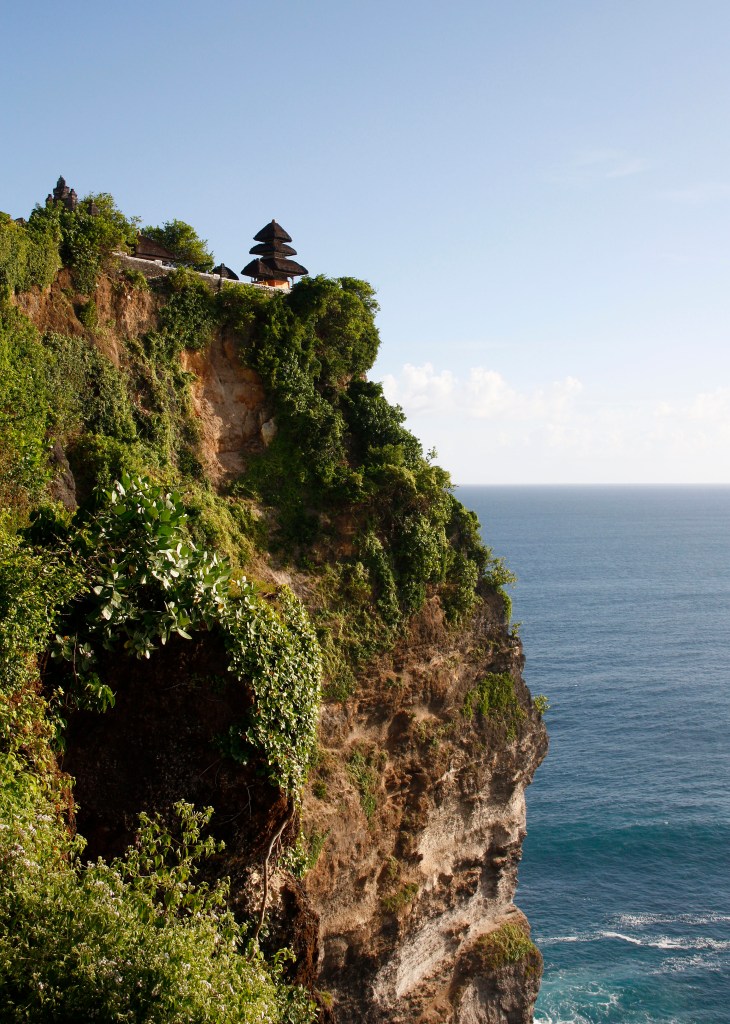
Tanah Lot Temple. This temple complex is situated on a rock outcrop which gets surrounded by the sea at high tide. Legend has it that a priest from Java came to this area in 1489 to spread Hinduism to the people. The local village chief resisted these teachings and so the priest moved a large rock out to sea to use it to meditate on. Offerings, called canang sari, can be found at temple sites and are placed there daily by the Balinese people.

This temple site has restaurants, shops, and frequent dance shows. It is a must-see temple on Bali, especially at sunset!
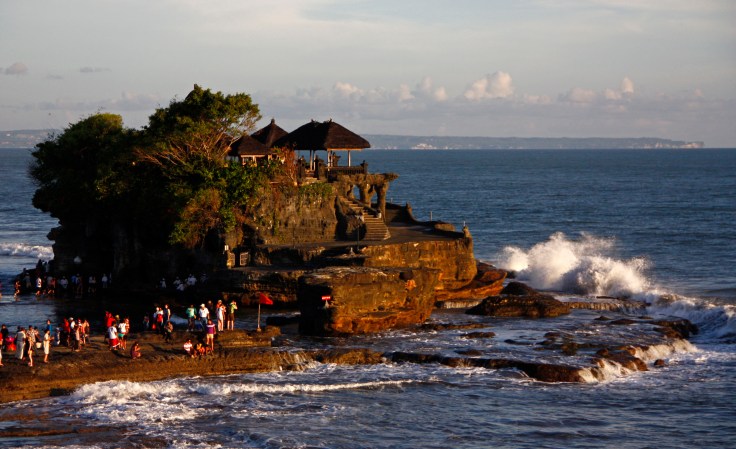
There are many more temples on Bali…about 20,00 in all…so visiting some is not hard. Do remember that visiting the temples will require certain etiquette. Make sure to bring a sarong for around your legs, and a scarf to cover your upper body.

Bali was definitely a wonderful place to visit and I would definitely recommend adding it to your bucket-list. For more about my trip to Bali click here.

Very interesting to see. The depth of history and culture is amazing. This is so close to australia, yet I haven’t been.
That last sign got me. Women not allowed to enter when they’re having a period? I think I understand why but how is that policed?
LikeLiked by 1 person
You must go sometime! The countryside left me breathless at times…such beauty! and the people are so lovely.
Yes we were a bit taken aback by that sign, but both my daughter and I were very respectful of their culture as I hope most people would be.
LikeLike
One day, hopefully. But there just seem to be so many Australians there all the time. As an Australian, I usually prefer to go elsewhere. 🙂
Yes, be respectful of culture and law, even if you don’t understand it. Travellers are guests in their country.
LikeLike